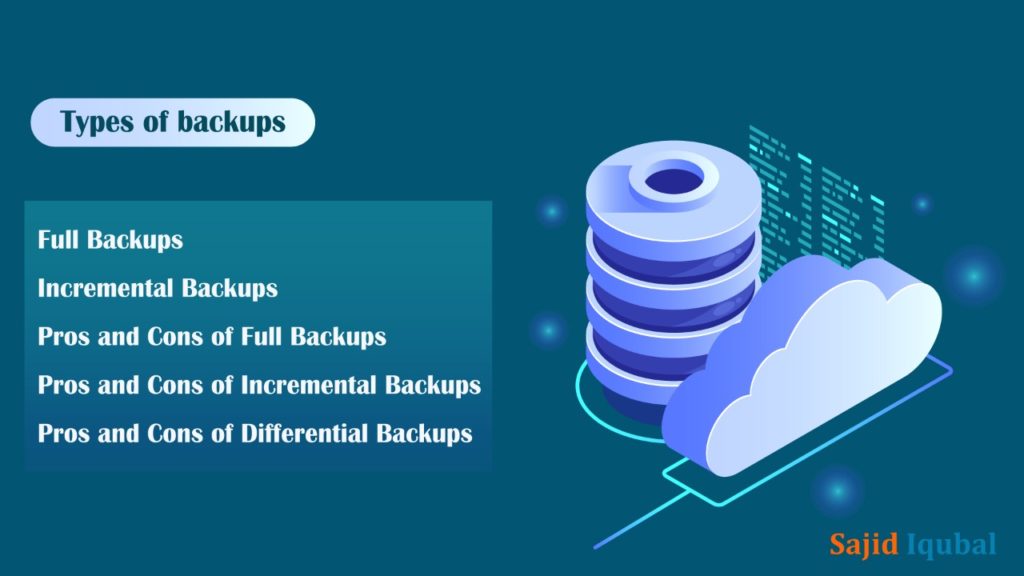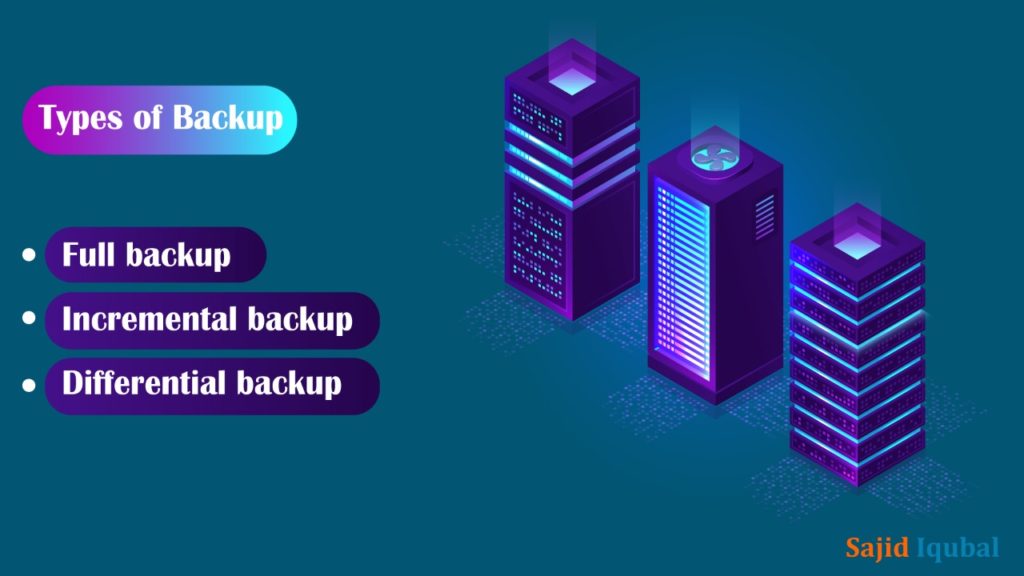A Backup is a copy of multiple files, created according to an alternative, so we can use them whenever the original data is lost or unusable. Most often we save our data in the hard drive of the computer, so it often happens that the hard drive crashes on time because it also has a lot of malfunctions like different electronic devices, so they can’t be completely vicious.

At such times, we come to know the true importance of data backup. This is not just for malfunction of the hardware, but sometimes software malfunction is also responsible for this. For example, if a virus or Trojan system corrupts the memory, then there is the loss of data. So our data loss can happen for many reasons.
To overcome all these difficulties, today we discuss three such measures so that we can back up our information securely. These include CD-R, DVD-R, USB thumb drives, External Drives, and Cloud Storage. If we use them correctly, then we can back up our important data very easily and can use it if needed.
Types Of Backup
By the way, if there are many such types of Backup, and such terms, which we use to back up our digital contents. Therefore, today I have tried to explain to you about the types of the same Backup, their advantages, and disadvantages. Then let’s know about them.

1. Full Backup
Full backup is a method of backup where all files and folders are selected to perform backup. It is used from initial or first backup according to which after incremental and differential backups are done. Similarly, after doing incremental and differential backups many times, it is very common that we start again with a fresh full backup.
Some people like to do a full backup for their smaller folders and projects which do not occupy much storage space.
Examples Of Full Backup
Here you backup your daily tasks every night from Monday to Friday. And this cycle goes on every day. At the end of all backup, we will get all our files and folders backup. In such a situation, there will be no risk of loss of data.
Advantages
- Restore them is very easy and fast because the entire list of files and folders is stored in the same backup set.
- With this, it is also very easy to maintain and restore with different versions.
Disadvantages
- It may take longer to do backups because here all the file backup is done one more time completely which can increase the backup time.
- It consumes more space than incremental and differential backups. Because here the exact same files are repeatedly stored repeatedly during backup which is a waste of storage.
2. Incremental Backup
Incremental backup is a backup in which all the changes that occur are after the last backup. Here last backup can be either a full backup or simply last incremental backup. Here in incremental backups, a full backup is done first and after that, the other backups are nothing but the same changed files and new files that are added after the last backup.
Example Of Incremental Backup
You can set this protocol for incremental backup, where its work will continue every night from Monday to Friday. To perform this, you have done your first backup on Monday. Here the first backup will be full because you have not done any backup before this. In Tuesday incremental backup, only those files which have been changed after Monday and some new files have been added to it. In the same way, only the changes made in your day will be backed up.
Advantages
- These are much faster backups
- There is efficient use of storage space here because the files are not duplicated here. Very little storage space is used here.
Disadvantages
- Restores here are much slower than full backup and differential backups.
- Restores are also a bit complicated with this. To do this, all backup sets have to be done first, such as full backup and other incremental backups.
3. Differential Backup
Differential backups always come in the middle of full backups and incremental backups. Differential backup is called the backup after all the changes have been made after the last full backup. In differential backups, a full backup is performed first and then the other backup runs are the same changes that occur after the last full backup. The result here is a much faster backup if we compare it to full backup. The storage space that is used is very less compared to Incremental backups. Restores are slow in this form full backup whereas they are faster than incremental backups.
Examples Of Differential Backup
If we set up differential backup to backup all night from Monday to Friday, then as we know the first backup Monday will be the full backup. Then the backup in the next days will only store backups that are different from that previous backup. In the same way, only the changed files will be copied further.
Advantages
- These are much faster backups than full backups
- In this, storage space is used efficiently because only the changed data is backup in them.
- This restores faster as compared to incremental backups
Disadvantages
- Backups here are much slower than incremental backups
- Here storage space is not used more efficiently than Incremental backup. All files that are added and edited are duplicated again after the initial full backup with all subsequent differential backup.
- Restores here are very slow compared to full backups.
- With this Restores are slightly more complicated than full backups but simpler than incremental backups.
Conclusion
Hopefully, you have benefited from this blog and you have come to know about Backup and its three different types full backup, incremental backup, and differential backup.